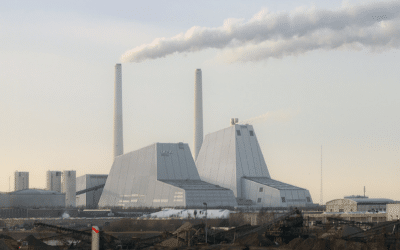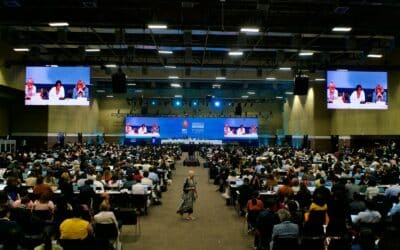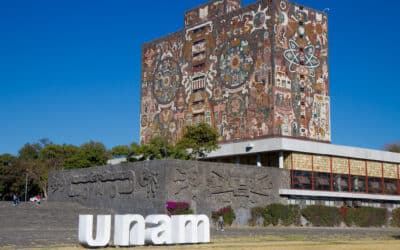This briefing by Anja Chalmin, a researcher with Geoengineering Monitor and the ETC Group, examines The Degrees Initiative, a UK-based NGO that is “dedicated to putting the Global South at the centre of the Solar Radiation Modification (SRM) conversation.”
Contents
- Summary
- Introduction: The Degrees Initiative’s background, objectives and funding
- The Degrees Initiative’s management structures: Dominated by research institutions in the Global North
- The influence of institutions in the Global North on Degrees Modeling Fund (DMF) research
- A clear research selection agenda: DMF research teams are predominantly modelling SAI deployment, largely in high emissions scenarios
- IPCC worst-case climate scenarios are being used to model SRM deployment in two-thirds of DMF modelling studies
- The legitimacy and risks of SRM climate modelling
- Conclusion
Summary
The DEveloping country Governance REsearch and Evaluation for SRM (Degrees) Initiative’s stated aim is to facilitate the participation of countries in the Global South in research relating to the deployment and governance of solar geoengineering, referred to as Solar Radiation Management (SRM).
However, the Initiative’s staffing and grant-making structures are more reflective of an organisation based in the Global North imposing its research agenda onto the Global South. Its team, board and volunteers are dominated by members of the Global North research community, and the Global North is also strongly represented in terms of the authors of the research produced with the support of the Initiative. Furthermore, The Degrees Initiative is predominantly funded by foundations run by technology and finance billionaires based in the Global North, some of which also fund open-air experiments and the commercialisation of geoengineering technologies. These foundations are driving solar geoengineering research and undermining efforts to ensure that SRM technologies are not deployed.
The Initiative claims to promote a broad and diverse range of research approaches to SRM. However, rather than supporting scientists based in the Global South to conduct the research that they would choose to prioritise in terms of how climate change affects the countries that they live in, the research published at the time of writing predominantly models the deployment of Stratospheric Aerosol Injection (SAI) against a backdrop of worst-case greenhouse gas emission scenarios. This modelling approach is not always transparently disclosed and may lead to a distorted perception of SAI, whereby policy-makers may view these studies as evidence that solar geoengineering is a viable alternative to urgent emissions reductions. This narrow approach to research also fails to take into account the wide range of risks that would be associated with the large-scale deployment of solar geoengineering.
In addition, the modelling studies carried out with the support of the Initiative are based on climate models developed by the research community in the Global North, and have been criticised because their underlying assumptions may not accurately reflect the risks of climate change or solar geoengineering deployment across the Global South.
Through the research it is funding, The Degrees Initiative is playing a key role in normalising and legitimising solar geoengineering as a viable mitigation strategy, and in doing so is acting as a stepping stone to open-air SRM experiments. This will ultimately undermine real solutions to the climate crisis by encouraging climate mitigation efforts to focus on technological quick-fixes rather than deep and genuine emissions reductions.
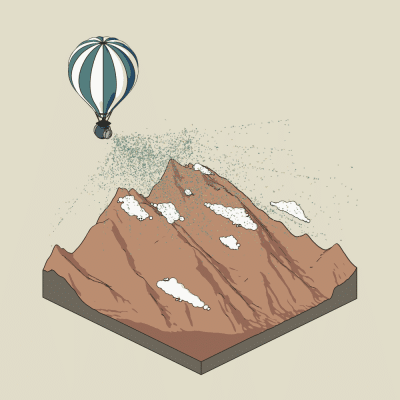
Solar Radiation Management (SRM), also called Solar Radiation Modification, refers to large-scale technological interventions that attempt to address the symptoms of climate change by reflecting sunlight back into space. These theoretical proposals range from spraying aerosols into the stratosphere to modifying clouds, plants and ice to make them more reflective. They would pose serious and likely irreversible risks to ecosystems and livelihoods if they were ever deployed on a large-scale, and divert attention away from the urgent need to address the root causes of the climate crisis.
Stratospheric Aerosol Injection (SAI) is the most prominent SRM approach and aims to mimic the cooling effects observed after large volcanic eruptions. It involves spraying large quantities of tiny reflective particles such as sulphate aerosols into an upper layer of the Earth’s atmosphere to reflect sunlight back into space. SAI is associated with significant potential risks and uncertainties, including damage to human health, ecosystems and the ozone layer, reduced agricultural yields and significant changes to rainfall patterns. Another major risk of SAI is the so-called termination effect. In order to mask the warming effects of greenhouse gases, SAI deployment would require particle concentrations to be maintained through regular injections. However, rapid increases in temperature and changes in precipitation are predicted if SAI were to be stopped abruptly, causing major impacts to ecosystems.
Introduction: The Degrees Initiative’s background, objectives and funding
The Degrees Initiative evolved from the SRM Governance Initiative (SRMGI), which was launched in 2010 by the Royal Society (UK), the Environmental Defense Fund (USA) and The World Academy of Sciences (Italy). SRMGI stated that it was established to engage with scientists, governments and civil society, particularly in the Global South, to discuss the governance of solar geoengineering research. It claimed “not [to] take a stance on SRM research or the use of SRM”, but rather to promote dialogue. However, SRMGI was criticised in 2017 due to the fact that geoengineering proponents from the Global North were strongly represented in its initial working group, whereas geoengineering critics were not.
In 2021, SRMGI changed its name to The Degrees Initiative and registered as a UK-based organisation. It describes itself as a funder of “research teams in developing countries who want to understand how solar radiation modification (SRM) could affect their regions.” The Initiative organises “trailblazing” country-level SRM outreach events, and supports research on SRM through two research funds:
- The Degrees Modelling Fund (DMF) began operating in 2018 [1] and aims to investigate how the use of SRM affects climate conditions in the Global South. It describes itself as “the world’s largest SRM research programme, involving over 150 scientists from across 22 developing countries to date.” DMF research teams receive up to US$ 75,000.
- Following widespread criticism of the DMF’s narrow and technical focus, the Degrees Socio-Political Fund was recently launched with the declared aim of investigating the social and political implications of SRM in the Global South. The Fund recently announced its first nine research teams, which will receive up to US$ 45,000 and individual researchers up to US$ 25,000.
The Degrees Initiative itself has been funded predominantly by philanthropic foundations operated by tech and finance billionaires, some of which have a track record of funding open-air experiments and the commercialisation of geoengineering technologies. Current funders include:
- Open Philanthropy, which has granted over US$ 8 million since 2015. The foundation’s main backers are billionaires Cari Tuna and Dustin Moskovitz, co-founders of US software company Asana Inc, and Meta Platforms Inc, which owns and operates platforms such as Facebook, Instagram and WhatsApp. Open Philanthropy has also funded Harvard University’s Solar Geoengineering Research Program (SGRP), which attempted to conduct open-air SAI trials through the highly-controversial Stratospheric Controlled Perturbation Experiment (SCoPEx).
- The LAD Climate Fund, which has financed SRM-related research projects for a number of years including SilverLining, an organisation involved in open-ocean Marine Cloud Brightening experiments.
- The Cohler Charitable Fund, which is run by billionaire venture capitalist and former Facebook senior executive Matt Cohler and which also funds SilverLining.
- The Neukermans Family Fund, operated by Armand Neukermans, who has held high-profile positions at numerous tech companies, including Hewlett-Packard and Xerox, and is a funder of the University of Washington’s Marine Cloud Brightening Project (MCBP), which plans to conduct open-air solar geoengineering experiments.
- Outlier Projects, which exclusively funds organisations and companies linked to climate engineering, some of which are conducting open-air and open-ocean experiments and commercialising geoengineering technologies, including Vesta, Ocean Visions and the University of Chicago’s Climate Systems Engineering Initiative.
- The Quadrature Climate Foundation, described by The Guardian as being “run by billionaires whose fund has stakes worth $170m in fossil fuel firms” and which also funds SilverLining and the MCBP.
Open Philanthropy, the LAD Climate Fund and the Cohler Charitable Fund were also three of the Climate Overshoot Commission’s primary financiers, a group of former politicians whose 2023 report advocated for small-scale solar geoengineering experiments.
Previous funders of The Degrees Initiative have also included:
- Tech billionaire and angel investor Bill Trenchard, best known for his early investment in Uber, and also a funder of Harvard’s SGRP;
- Carbon War Room, a foundation owned by billionaire Richard Branson’s Virgin Group, which is also owner of the UK’s second largest airline;
- The Fund for Innovative Climate and Energy Research (FICER), which is personally funded by tech billionaire Bill Gates, and which also funded Harvard’s SGRP;
- The investment firm Lowercarbon Capital, led by former Google executive, tech billionaire and venture capitalist Chris Sacca, and which is currently financing numerous companies that have been commercialising geoengineering schemes such as direct air capture companies Heirloom and Carbon Engineering, and is a funder of the MCBP;
- The Pritzker Innovation Fund, owned by one of the richest families in the United States, which also funded Harvard University’s SGRP, and whose president and founder Rachel Pritzker is an advisor to SilverLining and a leading advocate of “ecomodernism”, which champions technological responses to global environmental crises, including Carbon Dioxide Removal (CDR); and
- Zennström Philanthropies, co-founded by tech billionaire Niklas Zennström who developed Skype and other software companies, and co-founded the venture capital firm Atomico.
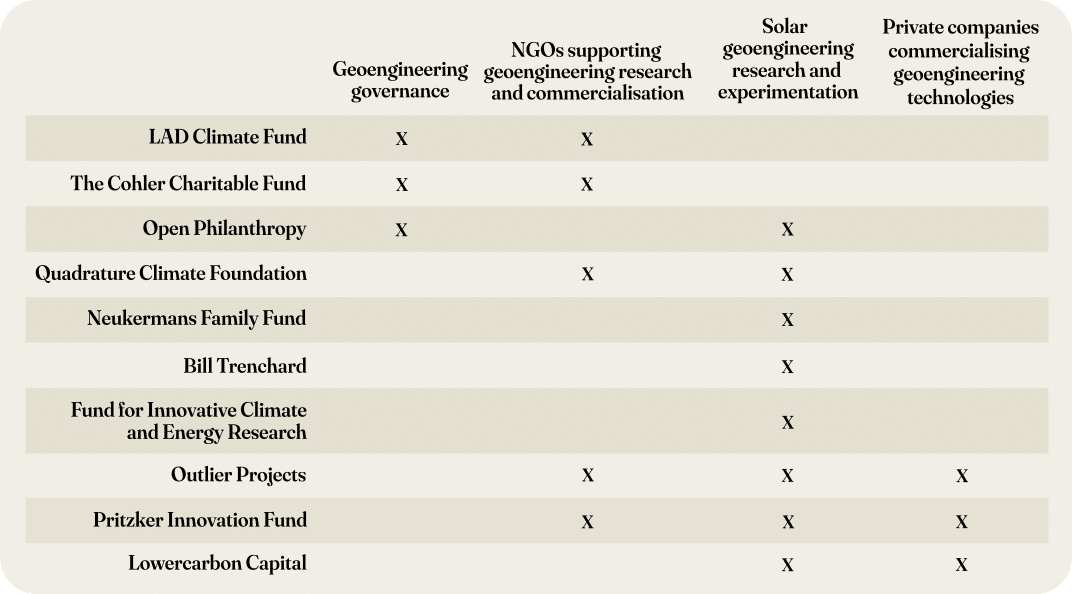
The Degrees Initiative’s management structures: Dominated by research institutions in the Global North
Given that The Degrees Initiative focuses its efforts on facilitating SRM research in the Global South, which has been largely absent from the SRM discussion to date, you might expect strong representation of Global South research institutions throughout the organisation. However, an analysis of the Initiative’s staffing structures shows that the Global South is underrepresented in managing and shaping its activities. The Degrees Initiative team is composed exclusively of people based at institutions in the Global North, and the Board of Trustees is predominantly composed of people based in the Global North. Further still, more than two-thirds of the The Degrees Initiative’s volunteers who “have advised on the design of the Degrees Modelling Fund, helped moderate our workshops, reviewed applications, acted as research collaborators for the research teams, or served as board members” are also based at research institutions in the Global North.
The influence of institutions in the Global North on Degrees Modeling Fund (DMF) research
After its opening funding round in 2018 DMF selected eight research teams to support, with the number increasing to 28 in August 2024, consisting of between one and ten members. Three teams established in 2018 are no longer active. Some of the first teams to receive support included researchers based at institutions in the Global North, most notably the first Bangladesh working group, half of which is still made up of researchers based at institutions in the Global North.
As of the end of August 2024, 28 peer-reviewed papers had been published by DMF-funded research teams. An analysis of their contributing authors illustrates the influence of the Global North research community in this research:
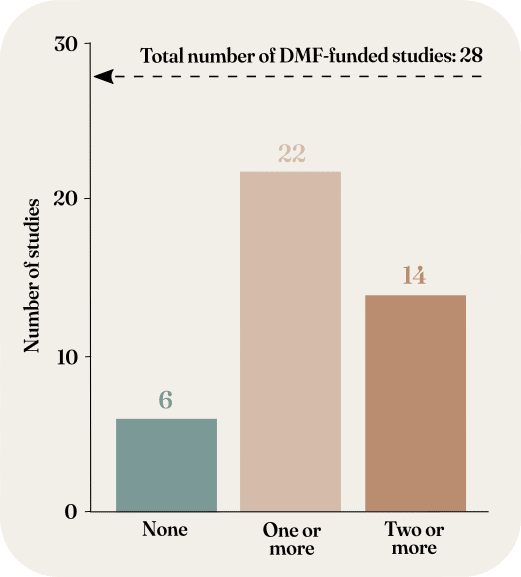
- Authors contributing to DMF papers represent research institutions in 24 different countries, more than a third of which are in the Global North (15 in the Global South [2] and nine in the Global North. [3])
- Authors based at institutions in the United States were the third most frequent contributors.
- Authors based at institutions in the Global North contributed to 80% of the publications, and more than 50% of the publications were co-authored by more than one author based at a research institution in the Global North.
- Only six DMF papers [4] had no contributors from research institutions based in the Global North, and there were three publications [5] with more authors based in the Global North than the Global South.
On top of this, at least eight of the authors that have contributed to papers published by DMF research teams have links to Harvard’s Solar Geoengineering Research Program (SGRP), either as research affiliates and/or contributors to SGRP publications. SGRP hosted the controversial SCoPEx project, which aimed to conduct open-air SRM experiments and was seen as being at the forefront of efforts to normalise SRM as a climate mitigation solution. SCoPEx was cancelled in March 2024 following years of public protest led by Indigenous Peoples’ and civil society organisations. More than 60% of the DMF studies published at the time of writing involve up to three authors with links to Harvard’s SGRP.
Furthermore, the unequal nature of partnerships between research institutions in the Global North and the Global South is increasingly being discussed and criticised in academic circles, as many research partnerships are not conducted on an equal footing. Challenges include the fact that the partner in the Global North usually provides the funding, influences the research questions and often does not take sufficient account of the research interests and needs of the economically-dependent partner. [6] The composition of The Degrees Initiative’s governance structures and evidence of diverging research priorities suggest that research institutions in the Global South receiving DMF funding will be experiencing these challenges.
A clear research selection agenda: DMF research teams are predominantly modelling SAI deployment, largely in high emissions scenarios
The Degrees Initiative team is responsible for selecting the research teams that are awarded funding through the DMF and, in theory, “applicants are free to define their own research questions and methods for answering them – the Degrees Initiative does not tell teams what to study or how to do it”. [7] However, Professor Laurence Delina, a climate expert at the Hong Kong University of Science and Technology, has described how the Initiative has limited the choice of research topics: “very little to zero funding was made available to other experts, particularly in policy, social sciences, and the humanities, despite their interest in doing the work.”
A participant at the Initiative’s engagement workshop in Mexico City in April 2023 has also reported that almost all of the estimated 40 researchers present expressed a clear interest in working on a range of climate issues other than SRM, [8] showing that the Initiative’s research priorities are not reflective of or responsive to the expressed needs of the climate scientists it is seeking to partner with.
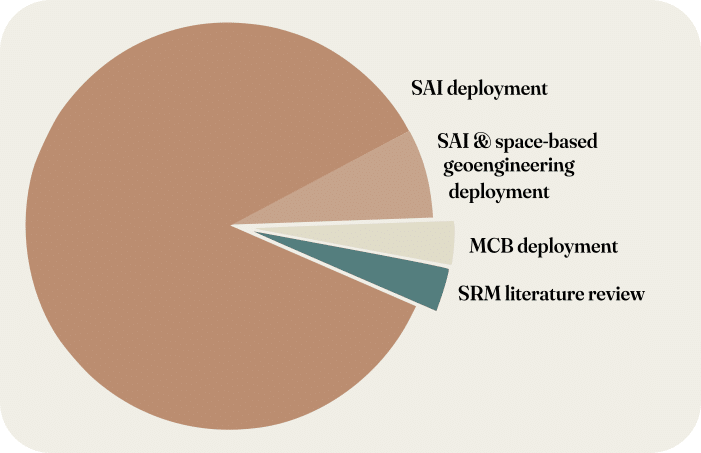
Of the 28 peer-reviewed studies that had been published by DMF-funded research teams at the time of writing, over 90% (26 studies) modelled the deployment of SAI, with two studies [9] also modelling space-based geoengineering. [10] One study modelled the deployment of marine cloud brightening and another one reviewed studies looking at the effects of SRM on hydrological cycles.
At first glance, the modelled impacts of SAI deployment (and in the case of marine cloud brightening) appear to be diverse, and have included changes to the West African monsoon, cocoa production, malaria risk, droughts and storm track development. However, all of the modelling has ultimately followed the same structure:
- One or more climate models and IPCC climate scenarios were selected and used to compare how the climate scenario evolved with and without the use of SAI; high greenhouse gas emissions pathways were most frequently chosen, and a low emissions pathway has never been considered;
- The modelling analysed the influence of SAI on temperature and/or precipitation;
- Conclusions were drawn based on these temperature and precipitation trends, for example, on the impacts on cocoa cultivation or the conditions for the spread of malaria.
The uniformity of this research casts doubt over The Degrees Initiative’s statement that DMF teams are free to define their own research questions and methods.
IPCC worst-case climate scenarios are being used to model SRM deployment in two-thirds of DMF modelling studies
The IPCC climate scenarios used by DMF-funded modelling studies are shown below.
| IPCC climate scenario [11] | N° of publications |
|---|---|
| SSP5-8.5 (very high greenhouse gas emissions scenario) | 4 |
| RCP8.5 (high greenhouse gas emissions scenario) | 13 |
| RCP8.5 and RCP4.5, RCP8.5 and SSP2-4.5 | 2 |
| RCP4.5 (intermediate greenhouse gas emissions scenario) | 6 |
| SSP2-4.5 (intermediate greenhouse gas emissions scenario) | 1 |
(SSP = Shared Socioeconomic Pathway; RCP = Representative Concentration Pathway, GHG = greenhouse gas)
Of the 26 DMF-funded modelling studies that are based on IPCC climate scenarios, 22 are based on high to intermediate IPCC scenarios, and four studies are based on the IPCC SSP5-8.5 climate scenario, which is the worst-case scenario with the highest greenhouse gas emissions. The most frequently chosen IPCC scenario is RCP8.5, which assumes no mitigation efforts and a CO2 concentration four times higher than pre-industrial levels. Best-case scenarios, such as the low greenhouse gas emissions scenarios SSP1-2.6 and RCP2.6, have never been used in DMF-funded modelling studies.
This means that two-thirds of the DMF studies modelling SRM deployment are based on a worst-case climate scenario, in other words, the pathway with the highest greenhouse gas emissions and no climate mitigation action. The likelihood of the RCP8.5 scenario becoming reality is the subject of much debate, partly because it predicts at least a threefold increase in global coal consumption. [13]
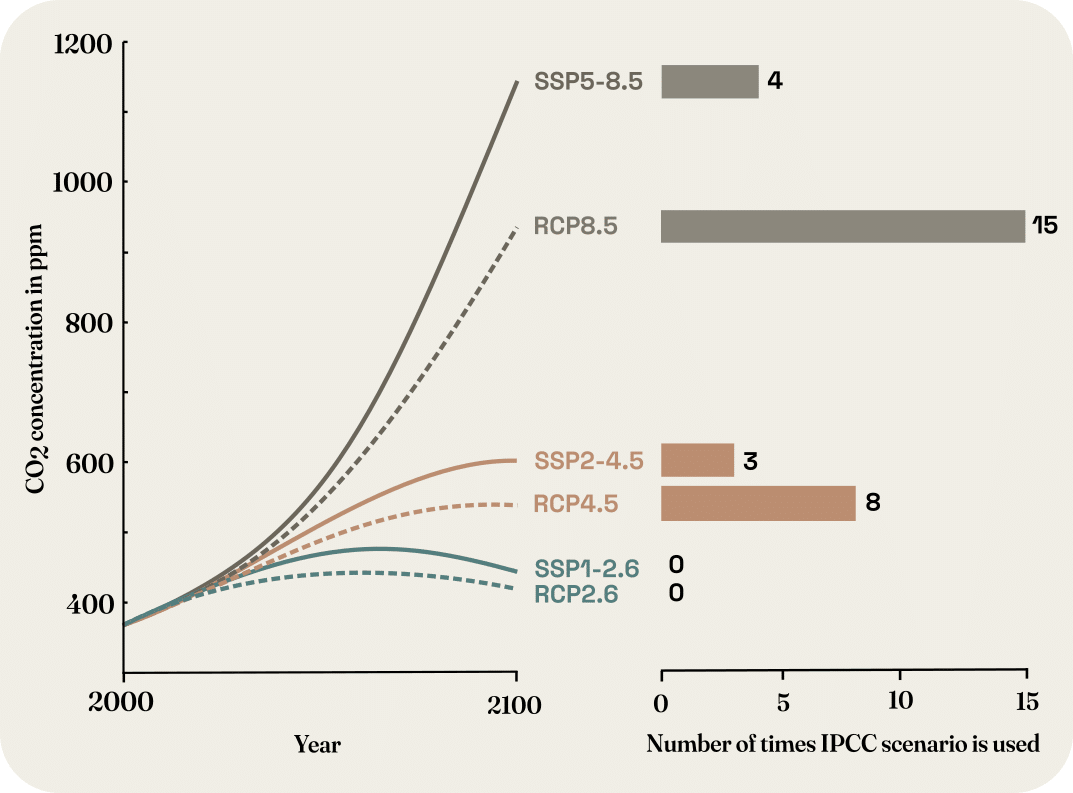
This point is highlighted in the Iranian research team’s study, published in 2024, which states that its modelling of SAI “takes into account solely the high-emissions scenario SSP5-8.5 that is suitable for capturing a high “signal” compared to internal variability. This is useful for understanding the science but inconsistent with present-day projections of mitigation attempts.”
Scenarios with very high radiative forcing such as RCP8.5 and SSP5-8.5 lead to larger temperature increases and hence more significant climate impacts due to more severe changes in the climate system. The modelling results are therefore influenced by the choice of scenario, as higher temperatures increase the likelihood that the theoretical cooling effect of SRM techniques will be modelled more favourably.
Due to these factors, the IPCC climate scenario being used in the modelling studies should be communicated transparently, but this is not always the case. Only 11 of the 19 DMF-funded publications based on the RCP8.5 or SSP5-8.5 scenarios state in their abstracts which scenario is being used, which obscures the fact that the modelling is not representative of the range of different IPCC climate scenarios.
This approach to SRM research is fundamental to the “risk-risk” framing that geoengineering proponents are trying to introduce into the political discourse around SRM. In order to normalise discussions on the use of SRM globally, the risks of SRM deployment are increasingly being compared to the risks of a worst-case climate change scenario, particularly those faced by the most vulnerable countries. On top of this, the risks being compared are intentionally narrowed such that only climate-related risks are considered, while the deployment of solar geoengineering would bring with it a much broader range of ecological, social, economic and geopolitical challenges.
By consistently modelling unlikely high-emissions climate scenarios, not always communicating this transparently and ignoring the broader risks associated with the deployment of solar geoengineering, when viewed as a whole the research being funded by the DMF will present a distorted perception of the climate mitigation potential of SAI.
The legitimacy and risks of SRM climate modelling
DMF-funded modelling studies are conducted using climate models developed by the northern research community, such as GeoMIP (Geoengineering Model Intercomparison Project) and GLENS (Geoengineering Large Ensemble Project). Researchers in the Global South have argued that these climate models lack credibility because they do not adequately consider local circumstances, such as access to water.
The models have also been criticised for potentially exacerbating climate risk in the Global South, as climate projections such as changes to precipitation patterns are inconsistent for many of its most vulnerable regions. This makes it difficult to develop appropriate policy responses, and ultimately leads to countries in the Global South being less prepared to implement adaptation measures than those in the North, where climate projections tend to be more consistent and the risks better understood.
The reliability and value of modelling complex atmospheric interactions and processes is still being debated, and there are major uncertainties over the ability of climate models to accurately assess the potential impacts of SAI, [14] especially given that modelling changes to temperature and precipitation alone leads to an oversimplified and incomplete representation. This is because climate models cannot capture the full complexity of atmospheric processes, in part due to the fact that processes such as cloud formation and aerosol interaction in the troposphere and stratosphere are not yet fully understood. In addition, the modelling approach taken by DMF-funded research teams obscures the inherent complexity of SAI, for example by ignoring its impacts on ecosystems and social issues.
Another risk inherent to SRM modelling studies such as those being undertaken by DMF research teams is the fact that they are a first step towards open-air experiments and the large-scale deployment of these technologies. This has been demonstrated by the example of Harvard’s SGRP, where SRM modelling was a stepping stone to open-air SRM experiments, before they were stopped by public protests.
Conclusion
The African Technology Assessment Platform is skeptical about the role that organisations such as The Degrees Initiative are playing in the SRM debate in the Global South, and cautions: “As geoengineering proposals are by and large created by northern countries with high emissions in order to avoid reducing their own emissions, they create “research support” projects involving researchers in Africa in order to push the idea that geoengineering is of interest to the global South.”
The inherent biases described in this briefing in the way that The Degrees Initiative approaches the research it funds in the Global South confirms these concerns. This includes both the Initiative’s staffing structures, in which the Global North is overrepresented in terms of management and decision-making, and the one-sided focus of the research it has supported. With one exception, the deployment of SRM is central to the modelling studies that have been carried out, and its impacts are mainly considered in the context of unlikely high greenhouse gas emissions scenarios where effective emissions reductions measures are not implemented. This issue is not always communicated transparently, and may lead to a distorted perception of the research results overall by casting SAI in a favorable light.
The credibility of the results is further challenged by the fact that climate projections for the Global South are inconsistent, meaning that climate models do not adequately reflect risk in southern countries. There are also major uncertainties over the ability of climate models to accurately model complex atmospheric interactions and assess the potential impacts of SRM.
By providing grants to under-resourced researchers at institutions in the Global South to undertake a narrow range of SRM research, The Degrees Initiative is imposing its own agenda onto climate research and, in doing so, adding weight to the political narrative that the risks posed by SRM to vulnerable countries are less significant overall than the risks posed by catastrophic climate change. This research approach considers only climate risks and ignores the broader ecological, social, economic and geopolitical challenges inherent to SRM.
The Degrees Initiative and similar organisations are therefore playing a key role in normalising solar geoengineering as a viable mitigation strategy, and in particular helping to position SAI as an effective “Plan B” should other mitigation efforts fail. This in turn is encouraging the long-standing efforts of SRM proponents to conduct open-air experiments. Ultimately, this will also undermine real solutions to the climate crisis by giving big polluters the excuse they are looking for to focus mitigation efforts on technological quick-fixes rather than deep and genuine emissions reductions.
Endnotes
[1] In 2018, SRMGI and TWAS launched the DEveloping Country Impacts Modelling AnaLysis for SRM (DECIMALS) Fund, which became the DMF in 2022.
[2] Argentina, Bangladesh, Benin, Brazil, Cameroon, China, Cote d‘Ivoire, Cuba, India, Indonesia, Iran, Jamaica, Malaysia, South Africa, Vietnam.
[3] Czech Republic, Finland, France, Germany, the Netherlands, Norway, Slovenia, UK, USA
[4] Argentina (2022), India (2024), Indonesia (2021), Indonesia (2023), Jamaica (2021), Malaysia (2023)
[5] Bangladesh (2022), Iran (2023), Iran (2024)
[6] Molosi-France, K. and Makoni, S. (2020) A Partnership of Un-Equals: Global South–North Research Collaborations in Higher Education Institutions. In: Modern Africa: Politics, History and Society, https://doi.org/10.26806/modafr.v8i2.343; Schneider, N. (2017) Between Promise and Skepticism: The Global South and Our Role as Engaged Intellectuals. In: The Global South, https://doi.org/10.2979/globalsouth.11.2.02; Tickle, L. (2015) Academics concerned over ‘exploitative’ global research partnerships. In: The Guardian, https://www.theguardian.com/higher-education-network/2015/jul/14/academics-concerned-over-exploitative-global-research-partnerships
[7] The Degrees Initiative, accessed 05/2024: https://www.degrees.ngo/degrees-modelling-fund/; Dove Z., et al (2024): Building capacity to govern emerging climate intervention technologies, Science of the Anthropocene, https://doi.org/10.1525/elementa.2023.00124
[8] S. Ribeiro, personal communication, September 2024
[9] Malaysia (2024), Cameroon (2024)
[10] A concept that attempts to shade the Earth from space by controlling the amount of incoming solar radiation through the deployment of large structures.
[11] IPCC (2021) Summary for Policymakers, https://www.ipcc.ch/report/ar6/wg1/downloads/report/IPCC_AR6_WGI_SPM.pdf; IPCC Glossary (accessed 05/2024) https://www.ipcc-data.org/guidelines/pages/glossary/glossary_r.html
[12] This review covered 26 of the 28 studies, because two of the studies were not based on IPCC scenarios. One review studied the effects of SRM on hydrological cycles and one modelled the deployment of sulphate aerosols at three different altitudes.
[13] Fraser Institute (2020), Ritchie & Dowlatabadi (2017), Pielke (2020), Global Warming Policy Foundation (2021)
[14] National Academies of Sciences, Engineering, and Medicine (2021) Reflecting Sunlight: Recommendations for Solar Geoengineering Research and Research Governance. Washington, DC, The National Academies Press, https://doi.org/10.17226/25762; Fasullo, J. T. and Richter, J. H. (2023) Dependence of strategic solar climate intervention on background scenario and model physics, Atmos. Chem. Phys., 23, 163–182, https://doi.org/10.5194/acp-23-163-2023

